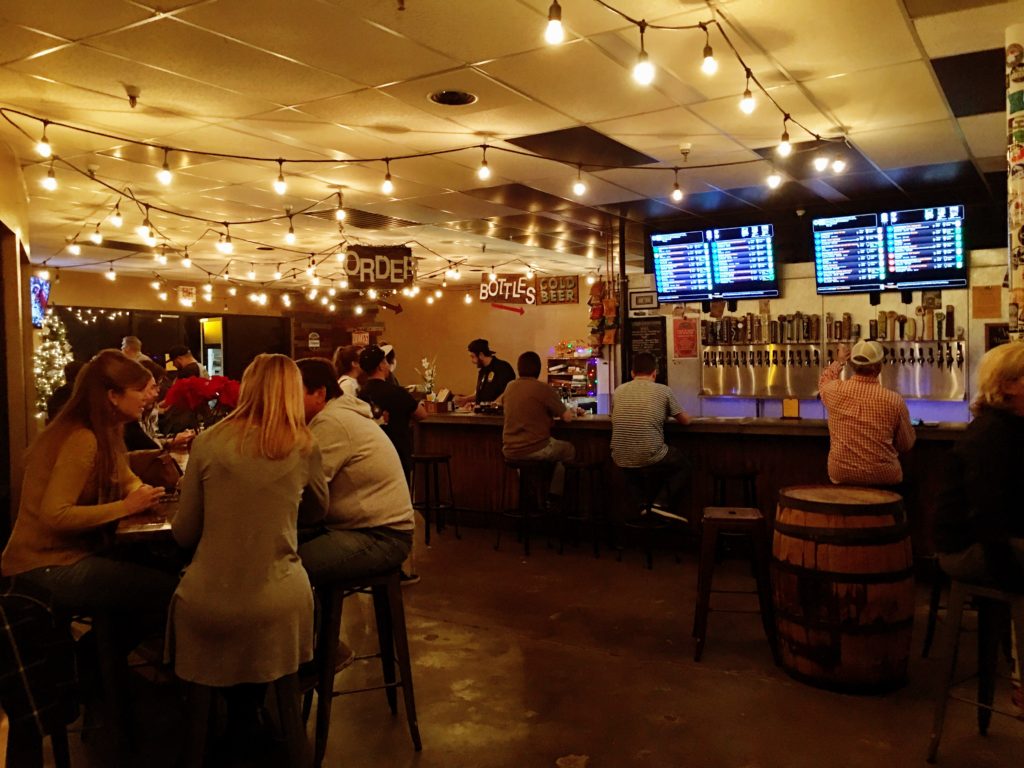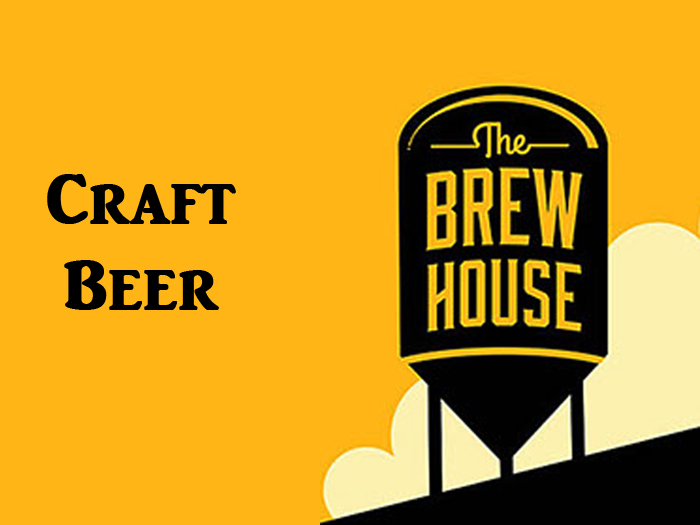I mostly write stories about breweries I visit. However, every so often I write about other great places to enjoy craft beers – like The BrewHouse. The BrewHouse delivers the finest selection of craft beers in San Juan Capistrano and is one of my favorite local beer stops.
The BrewHouse opened in November 2014 with a stated goal of providing “an unpretentious, relaxed environment, in the form of a brewery-style tasting room, for appreciation of all things craft beer.” The tasting room provides a regularly changing rotation of 30 local, regional, and international draft selections. As a result, The BrewHouse offers some of the most diverse and excellent craft beers, ciders, and meads in the area for your drinking pleasure. Furthermore, over 100 different bottled beers can be purchased to take home or consume on site. In addition, the beverage lineup also features unique wines and craft sodas. Seating is plentiful, casual, and comfortable. On many evenings, a food truck vendor delivers tasty dishes to hungry patrons.
 The BrewHouse offers a relaxed atmosphere and great craft beer selection.
The BrewHouse offers a relaxed atmosphere and great craft beer selection.
There are additional features The BrewHouse provides that are very appealing to me: 1) the focus on maintaining clean beer lines and glasses; 2) patrons can order sample flights from the tap list; and 3) using DigitalPour technology to provide real-time, online display of the tap list with beverage details and keg status. Further, the craft beer enthusiasm and knowledge of the staff is excellent. Most notably to me, there is also a plan to add a tap for cask conditioned ale.
Co-founder and Managing Owner Andrew Reed is an avid home brewer and craft beer aficionado, who left the work world of corporate communications and marketing for a high-tech company to pursue a craft beer work environment. He’s frequently behind the bar and always ready to discuss any topic about craft beer. Hence, I was delighted he took some time to sit down with me and answer a few questions.
 Andrew Reed is the vision and force behind The BrewHouse.
Andrew Reed is the vision and force behind The BrewHouse.
My Talk With Andrew Reed
Why did you decide to leap into a craft-beer oriented business?
I was a home brewer and interested in craft beer for quite sometime. While I was interested in craft beer as a hobby, it wasn’t really until I saw a local area brewery [Cismontane Brewing] open, grow, create a certain type of vibe, and attract an interesting and supportive customer base that I considered moving into the craft beer business arena. Seeing the excitement and strong local community support, I thought “Here’s a potential business opportunity that I could combine with something (craft beer) that I really like a lot.”
How long have you been a home brewer? Do you still have time to homebrew?
I started brewing in the 1990’s while living in Atlanta. As is the case with many new home brewers, some home-brew attempts were successful and some attempts blew up in the garage. I took a break from home brewing while moving around to places like Singapore. However, when I moved to California my neighbor was a home brewer. So I restarted home brewing with him and we formed a small club [Los Flores Brew Club] to socialize with fellow home brewers and help share the costs. I still homebrew with the club even though I don’t always have the time to participate. But I really enjoy participating in the brewing process even if I can’t participate as often as I’d like.
Have you done much traveling to breweries – “Beer-cations”?
Before opening The BrewHouse, I visited a lot of breweries and tap houses in San Diego and Orange Counties. And as a member of the Orange County Brewers Guild, I manage to attend openings of new breweries in the OC area.
How detailed was your business plan? Did you meet your original plan goals?
We had a good level of detail with only a couple of “miscalculations”. For example, originally we expected to draw regular customers (that is, regular repeat customers) from 20-25 miles away. Turns out that expectation was optimistic. Our repeat customer base comes from within about a 5-6 mile radius. The reality is that people don’t go far from home to drink on a repeat basis. We do get people from further away but they are usually making a special trip or traveling through the area. In addition, we needed to tweak our inventory over time to more effectively respond to our customer base. However, our revenue fell within the range of projected revenue in the business plan. Overall, I’m pleased and almost surprised at how well the business plan worked out.
What has been your biggest surprise so far?
The wide demographic range of our customers. Our span of craft beer loving customers range from being in their 20’s to their 70’s.
Tell me your near- and far- term vision for The Brewhouse (environment and offerings).
My near-term goals are to cross off some items that have been on the “To Do” list for over a year. Items such as making some decorative improvements and optimizing the performance of our existing equipment infrastructure. I’m not looking too far ahead now. My mantra is “Crawl, Walk, Run”. At this stage I think we are toddling along. But I’d like to get out of the day-to-day operations trenches and establish a better strategic view to ensure we don’t get stagnate, that we address the future needs of our customers, as well as stay in tune with the industry.
Do a lot of new customers mistake you for a brewery?
They do. We wanted to invoke the atmosphere of a brewery tasting room and our name reflects that aim. Once new customers come in, our wide range of quality craft beers usually readily overcome any disappointment they may have had that we are not a brewery.
How do you choose and acquire the beers and other beverages for those taps? What’s the most popular style?
Essentially we have designated certain style beers (lagers, sours, pale ales, IPAs, porters, stouts, etc.) to go on specific taps. We have some flexibility, but want to keep the range of styles that our customers’ prefer. For example, with respect to amber, red, or brown ales we can mix the match-up (2 reds, 1 brown or 1 of each, etc.).
IPAs are definitely the most popular style followed by light beers.
What is the average life of a keg on tap? How do you maintain your tap system?
On average a keg lasts about 2 weeks. As a minimum, every time we change a keg we flush and clean the line. We are dedicated to keeping our lines clean.
In addition to the 30 kegs on tap, how many kegs do you typically keep in reserve?
In addition to the 30 on tap, about another 90 kegs.
You use a technology called Digital Pour to market and track the beers on tap. Tell me about that.
We discovered the Digital Pour technology early in our planning process. We loved the visual effect, the information the system displayed, and the overall functionality for both our operations and the customers’ information. Customers can view the board either here or on-line and read a ton of information to help guide their craft beer selections. Of course, our knowledgeable staff also seek to help any customer navigate the selections to help them chose beers they’ll enjoy. With respect to operations, we gain a ton of analytical data to help guide our future craft beer selections and maintain our existing inventory.
You also have bottle offerings for consumption or to take home?
Correct, our license allows for on-premise and off-premise sales. The bottle sales are popular. Sometimes customers incorrectly assume that our tap selections and bottle selections overlap. They almost never overlap. The kegs are often keg-unique products. In general, the bottles offer a good addition to our tap list. The bottles also allow us to offer some unique beers that we might never get in kegs.

